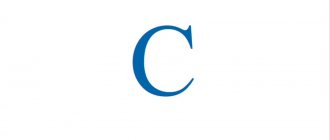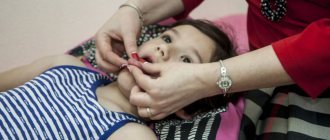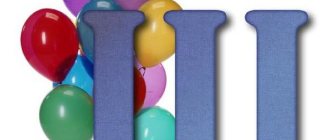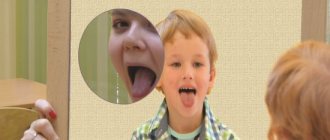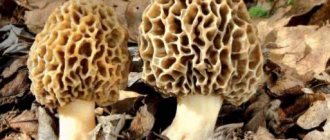- home
- Speech development
Dysarthria is a dysfunction of the speech apparatus, in which there is a decrease in the mobility of the articulatory organs or their paralysis.
The disorder is a negative consequence of neurological pathologies (congenital and acquired), birth head injuries, Rh conflict between mother and fetus, infectious diseases suffered at an early age, and brain surgery. Taking into account the symptoms and the area of damage to the cerebral cortex, several forms of dysarthria are distinguished:
- Bulbarnaya
Violations are observed in the speech and motor systems as a whole. There is paresis of the muscles of the body and face. The child has difficulty chewing and swallowing, his voice is weak, his speech is slow and unclear.
- Subcortical
Muscle tone is changed, facial expressions and areas of articulation are observed. When speaking, a spasm may occur. Intonation, speech rate, voice strength are impaired, motor skills are poorly developed.
- Cerebellar
Speech is scanned, movements of the tongue and lips are unclear, slow, the palate sags, most sounds are absent in speech.
- Cortical
Polysyllabic words are difficult to pronounce; there are no sibilants or affricates. More often, the child pronounces sounds that are difficult for him well in isolation, but in the flow of articulation they are lost, mixed up or missed.
- Pseudobulbar
From birth, the child exhibits the following signs of disturbances: profuse drooling after a year, choking when eating, drinking, and sucking is difficult, facial muscles work poorly. Words are pronounced distorted, but the stress and contour of the lexeme are preserved; sound analysis is extremely difficult.
Recommendations for conducting classes
Pronouncing sounds correctly only seems like a simple task. A child with impaired motor functions of the tongue, lips, and cheeks cannot do this easily. Organ dysfunction and immobility interfere. Articulatory gymnastics is aimed at training speech muscles, practicing specific positions of all elements of the apparatus, and consolidating the skill of clear speaking.
To make speech therapy sessions using gymnastics more effective, you cannot do without the recommendations of professionals:
- You need to practice 3-4 times daily for 5 minutes so that the skill is thoroughly consolidated. At the initial stage of correction, offer your preschooler no more than 3 different exercises per day.
- One task is performed 5-7 times.
- Hold the pose for 10-15 seconds.
- When drawing up a lesson plan, follow the rule: from simple to complex.
- Start the lesson with lip exercises, then start training your lips, cheeks and tongue.
- Use a mirror so that the child can see his own face in the reflection and control the completion of tasks independently.
- During the lesson, the child should sit with a straight back and relaxed limbs.
- Move on to new exercises after practicing the material already proposed. If you have difficulties, it is better to stop and additionally repeat poorly learned organ poses.
- Conduct classes in a playful, emotional way. You cannot put moral pressure on your child or force him to study.
Articulatory gymnastics of classical types is suitable for correctional work with preschoolers diagnosed with erased dysarthria. But special attention in such classes should be paid to the organization of the kinetic basis of movement (sensations).
A set of exercises to correct dysarthria includes several blocks. This is a workout for the lips, cheeks and lips at the same time, as well as tasks for working with the lower jaw. The set of games for speech muscles for each block of the lesson will naturally be different.
Combination and sequence of different types
The sequence is as follows: an adult and a child sit in front of a mirror, the adult points to himself, asks him to repeat, if the child does not succeed, the adult does it for him with his fingers, then the child tries to do it himself, and then tries to do it without using his hands. This is already active gymnastics, maybe not right away, periodically helping with your fingers. The main thing is not to rush, the execution must be precise and correct, so that later you don’t have to relearn.
Passive gymnastics is closely related to massage, or rather, massage smoothly flows into passive gymnastics. You need to clearly know that all exercises must be performed by first relaxing G. You cannot do them with tightly closed, tense muscles. And there will be little use and the child will experience discomfort and negativity, and may refuse to study altogether.
To begin with, it is advisable to teach your child to feel the difference between tense and relaxed lips, to tell him: “You feel how pleasant and good it is when your lips are soft, how beautiful they are.” Fix his attention that when the Gs are tense, they are thin, pale, and when relaxed they are bright, “bow-like”. When making sounds, it is very important that neither the jaw nor the lips tense. The mouth was wide open, otherwise it would be very difficult to work on correcting phonetics.
During static gymnastics, Gs are held in one position for some time, for example, counting to 10. The “tube” exercise is performed, the children hold it, and you count. And so several times, then “fence” and again keep in this position. With dynamic gymnastics, on the contrary, there is an active work of G, “fence - tube”, you need to work G, either stretching them and showing your teeth, or pulling them forward into a tube, also counting in several steps.
Move on to dynamic gymnastics when each exercise has already been practiced, is automated, and the child does it flawlessly. It is allowed to help with your hands, if a malfunction suddenly occurs, it can be combined with voice gymnastics, pronounced with a tube U, and with a fence I at different tempos, sometimes quickly, then slowly, then quieter, then louder, then in a thin voice, then in a “thick” one.
A set of lip exercises
The purpose of the set of tasks for working with the lips is to relax the muscles, normalize the tone of the tip and body of the tongue. The exercises help develop diction, so they are suitable for correcting all forms of dysarthria, including erased ones. We recommend playing with children under 7 years of age.
Smile
The child smiles, stretches the lip muscles as much as possible, but does not open them. The teeth are not visible.
tube
The lips are folded into a pipe and extended forward. The preschooler should feel the tension in the muscles around the mouth.
Fence
The mouth stretches into a wide smile, the teeth are clenched in the correct bite. The jaw is clearly visible from behind the lips.
Bagel
The exercise is similar to the Tube task, but you don’t need to stretch your lips long. The child folds them roundly so that his teeth are visible and slightly puts his lips forward.
Fence-Bagel-Smile-Proboscis
Invite your child to slowly alternate several poses, holding one exercise for 15 seconds. Repeat the complex 5-7 times in a row.
Smile-Tube
Perform the exercise rhythmically, clearly, at the teacher’s expense. First, the child stretches his lips in a smile without showing his teeth, then folds his lips into a tube and holds the pose for 15 seconds. Then he returns to his smile. Repeat the complex 5 times.
Fish
Show your preschooler a video of fish “talking” in the water. He must repeat their movements with his lips: clap against each other and say nothing. The exercise is performed slowly at the initial stage, then the pace accelerates.
Kiss
The child strongly pulls his cheeks inward, then quickly opens his mouth and clicks his tongue and lips. There will be a sound similar to a kiss. This exercise is suitable for warming up before a set of cheek training tasks.
Physical exercise about a hamster
To increase interest, activate perception, or change the type of activity, you can use a poem about a hamster.
Hamster-hamster, hamster (puff out our cheeks) Striped flank (stroke our cheeks) Hamster gets up early (pull ourselves up, open our eyes, yawn, opening our mouth wide) Washes cheeks, rubs ears. (we stroke the cheeks, touch the ears) The hamster sweeps the hut (we move our tongue behind the cheeks to the left and right) and goes out to exercise. (move your palms or fingers on the table) 1, 2, 3, 4, 5 (raise your arms up 5 times) Khomka wants to become strong (bend your arms at the elbows)
This concludes writing an article about cheeks. Oh, I forgot to tell you about the famous catchphrase, it says: “If you are hit on the right cheek, turn your left.” As it is understood, it is usually “non-resistance to evil through violence.” What are we doing? We fight the evil - poor cheek motor skills - with the help of massage, gymnastics and breathing exercises. Whether the speech therapist slaps the cheeks or the baby himself does not matter, the main thing is that speech defects are corrected and goodness triumphs.
Read blog articles, write comments on them, subscribe to new ones, share on social networks. Best wishes!
Exercises for lips and cheeks
The purpose of this block of exercises is to tone the muscles of the lips and cheeks at the same time, normalizing the outflow of blood from the articulatory organs. Before starting the tasks, it is recommended to rub the inside of your cheeks with your tongue, bite, and pat the outside of your face with your palms.
Well-fed hamster
The child inflates both cheeks, then each one in turn, and holds the pose for 10-15 seconds.
Hungry hamster
The preschooler strongly draws his cheeks inward. You can alternate between a well-fed and a hungry hamster.
Popping bubbles
The baby inflates both cheeks at the same time and holds the pose for 5 seconds. Then he slaps them with his fingers and sharply releases the air out.
Blowing and inflation
You can blow on anything: a candle, soap bubbles, a strip of paper, cotton wool, fluff, a boat on the water - make sure that the children do not inflate their cheeks while doing this, if the air spreads into the cheeks, then the sounds will be unclear. It is also good to use various pipes, whistles and pipes, as well as inflate balloons and inflatable toys. However, if the muscle movements are not coordinated, the air from the ball is sucked back by the baby, you need to continue working further, give the child a developed ball, a softer one.
Tongue exercises
Articulatory gymnastics for the tongue with dysarthria includes a set of exercises that will help cope with the immobility of the body and the tip of the organ. To correct a speech defect, a child must learn to spread his tongue, freely relax and tense it, depending on the speech situation.
Pancakes
The tongue is well relaxed and spread out. Placed on the lower lip. Then you need to slap your tongue, saying “five-five-five.” In this case, the lower lip should not be tucked. Be sure to ensure that the student’s breathing is even.
Spatula
The child’s task is to relax the body of the tongue well and place it on the lower lip. You cannot strain your organs for 10-15 seconds.
Cup
The mouth opens wide. The edges of the tongue are folded inward; the incisors cannot be touched. Invite your child to imagine that water is poured inside the resulting container (“cup”) and to hold it gently, without spilling it.
Needle
The tongue tenses and extends forward from the mouth like a sting.
Slide
The preschooler rests the tip of his tongue on his lower teeth, arches his back, and his mouth can be opened wide.
tube
The child opens his mouth, the tongue moves slightly forward, the side edges curl up.
Fungus
You need to open your mouth wide, suck the tip of your tongue to the upper palate. If it is difficult to maintain the position on your own, help with your fingers first.
Language gymnastics: interesting and fun
Parents should turn speech development training into an exciting game. Feel free to get creative. For example, promise that you will treat your baby to a lollipop if he shows how it can be hidden behind his cheek. Cover your baby's nose with chocolate or jam and ask him to lick the treat with his tongue. Promise to play your favorite game with your child after the “antics.”
Use a spatula to help your baby take the desired tongue position. When performing the task for the first time, there may be tension, but after several repetitions the child’s actions will be meaningful and easy. Don't forget to do both static and dynamic exercises. They give the desired effect only in combination.
If, after regularly completing tasks, you still notice weaknesses in your child’s speech, consult a speech therapist.
Exercises for the lower jaw
Tasks for the lower jaw help to develop the mobility of the articulatory apparatus. It is advisable to perform the exercises at a slow pace, tensing the facial muscles. If you need to pronounce vowels, pronounce them emphatically clearly. At the initial stage, help your child count out loud to hold the pose for the required time.
Chick
Before starting the task, agree with your child on a fast rhythm of work; do the exercise at a good pace.
The child should open his mouth wide, pulling the corners of his lips. You can't stick out your tongue. After holding the pose, the lower jaw quickly slams shut.
Shark
Main goal: practicing jaw movement in different directions. First, the mouth opens, then the jaw moves according to plan: to the right - returns to its place - left - down - forward - up (mouth closed, lips closed). Sudden movements should not be made to avoid dislocations and injuries. The rhythm of completing the task is counted by the teacher.
Monkey
You need to open your mouth as much as possible, pull your lower jaw towards your chest. The tongue simultaneously reaches towards the chin.
Static exercises of articulatory gymnastics
- tube with lips, also called “trunk” or “elephant”, lips stretch forward, as when pronouncing the sound U
- fence, open smile, show teeth, as when pronouncing the sound I
- closed smile with just lips
- the house is open, also called “window”, open your mouth wide - “open the window in the house”
- the house is closed - lips together, pressed tightly
- lock, cover the lower lip with the upper lip, which is pulled slightly into the mouth
- key, on the contrary, lower upper
- Whoa, close your lips, stretch them forward slightly and make a vibrating sound
- show your upper teeth, raise your upper lip and show your upper teeth
- show your lower teeth, lower your upper lip, pull back your lower lip
- snout, pull your lips forward, widen them slightly
- mouthpiece, also called “window” or “donut”, lips as when pronouncing O
Dynamic gymnastics for children
- fence - pipe (frog - elephant)
- open and close your mouth, slap your lips, making a soft sound
- “air kiss”, we stretch our lips forward (as for a kiss) - then we retract our cheeks so that the corners of our mouth touch, like a fish’s
- bite the upper lip, then the lower, “comb your lips”
- smile - tube
- the house is open - closed, close your lips, straining them, open your mouth wide, relaxing, show first the upper lips, then the lower ones, then all at once, a fence
- make faces - move your jaw left and right
- snout - tube
- window - house open - tube - fence - O - A - U - I
- charge for the trunk, twist the tube clockwise and counterclockwise, up and down, left and right. Look at the elephant, how it moves its trunk.
Gymnastics in a playful way
Breathing games go well with these exercises. The kid doesn't want to study, let's play. He doesn’t want to close G, so we blow the cotton wool off his palm and show him how fun it is to do “pfft,” as if a butterfly had fluttered from his palm. You need to lift the lower G up - put some cotton wool on your nose and blow from your lower lip. The horse gallops, we click our tongue and then it stops, “trrrr”, it doesn’t work, we play on our lips like a balalaika.
The game with soap bubbles goes well. It’s very fun to watch them fly, shimmering with rainbow stains. “Now blow it yourself!” - tell the baby. It may not work out right away, it’s okay, encourage the child. Take turns blowing with him, he either catches them with his hands or blows. You can also move your hand around the ring and the bubbles will also fly away.
Toys such as a harmonica, a pipe, a whistle, and various pipes and whistles can also help. as well as inflating balloons. Of course, this requires more complex skills, well-trained G muscles, the ability to hold a toy with your lips and at the same time draw in air and exhale without releasing the object from your mouth. Therefore, it’s okay if at first the pipe falls out along with the exhalation, and air is drawn in from the ball, this will work out over time.
